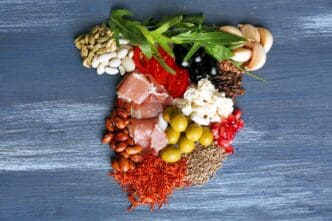In the vibrant, fast-paced world of Miami, where social connections are as dynamic as the city itself, a psychological framework known as the Five Love Languages is offering individuals and couples a powerful tool to deepen their bonds and significantly enhance their mental well-being. Developed by author and counselor Dr. Gary Chapman, this concept posits that people primarily express and receive love in five distinct ways. Understanding these “languages” can prevent the miscommunication and emotional distance that often lead to anxiety, loneliness, and relationship distress, providing a clear path toward feeling truly seen and appreciated by those who matter most.
What Are the Five Love Languages?
First introduced in Dr. Gary Chapman’s bestselling 1992 book, “The 5 Love Languages: The Secret to Love that Lasts,” the concept is built on a simple yet profound metaphor. Just as people from different countries may struggle to communicate without a shared language, partners can struggle to connect emotionally if they don’t speak the same primary love language. When one person expresses love in a way the other doesn’t recognize, the affection can be missed entirely, leaving both partners feeling unloved and unappreciated.
Dr. Chapman identified these five core methods of expressing and interpreting love through his extensive experience in marriage counseling. He noticed a recurring pattern where couples, despite having genuine affection for one another, felt emotionally disconnected. By categorizing these expressions of love, he provided a vocabulary for couples to understand their own needs and the needs of their partners.
The five love languages are: Words of Affirmation, Acts of Service, Receiving Gifts, Quality Time, and Physical Touch. While most people appreciate all five to some degree, everyone has a primary language that speaks to them more deeply than the others. Identifying and intentionally using your partner’s primary love language is the key to filling what Dr. Chapman calls their “emotional love tank.”
Decoding Each Language in the Magic City
Miami’s unique culture—a blend of high-energy ambition, diverse traditions, and a constant stream of social engagements—presents a specific set of challenges and opportunities for relationships. Applying the love languages here requires navigating this distinct environment to create moments of genuine connection.
1. Words of Affirmation
This language uses words to affirm and build up other people. It includes frequent compliments, words of appreciation, vocal encouragement, and saying “I love you.” For someone whose primary language is Words of Affirmation, hearing why they are loved is just as important as knowing that they are.
In a city prized for its image and external validation, from the bustling business world of Brickell to the social scenes of South Beach, genuine and specific words can cut through the noise. It’s not just about a generic compliment; it’s about telling your partner you admire their dedication after a long work week or expressing gratitude for how they handled a stressful family situation. These verbal affirmations act as a powerful anchor, reinforcing their intrinsic value beyond superficial measures of success.
2. Acts of Service
For some, actions truly speak louder than words. This love language is centered on doing things you know your partner would like you to do. It involves anticipating their needs and easing their burdens by performing helpful tasks, from household chores to running errands.
Life in Miami comes with its own set of stressors. An Act of Service could be as practical as prepping the apartment for a hurricane, navigating the notorious traffic on the Palmetto Expressway to pick up dinner, or taking on the bureaucratic headache of a government errand. These actions communicate love by saying, “I see you’re overwhelmed, and I want to make your life easier.” This tangible support fosters a deep sense of partnership and security.
3. Receiving Gifts
Often misunderstood as materialism, the language of Receiving Gifts is about the thoughtfulness and effort behind the gesture. The gift itself is a tangible, visual symbol that says, “I was thinking of you.” The monetary value is often irrelevant compared to the emotional weight of the item.
In Miami, this doesn’t have to mean a luxury shopping spree in the Design District. It could be as simple as bringing your partner their favorite cafecito and pastelito from a local ventanita in Little Havana. It might be a unique piece of art from a Wynwood gallery that reminded you of them, or a beautiful seashell found during a quiet walk on Key Biscayne. Each gift is a physical reminder of affection that they can see and hold, reinforcing the feeling of being known and cherished.
4. Quality Time
This language is all about giving someone your undivided, focused attention. It means putting away the phone, turning off the television, and actively listening and engaging in shared activities. The key ingredient is being present and creating a shared memory.
In a city of endless distractions, Quality Time can be the most precious resource of all. It’s about carving out intentional moments for connection. This could be a peaceful stroll through the Fairchild Tropical Botanic Garden, a long dinner in Coconut Grove where conversation flows without interruption, or simply watching the cruise ships depart from South Pointe Park together. For someone whose language is Quality Time, these moments of focused presence are the ultimate expression of love and a powerful antidote to loneliness.
5. Physical Touch
A person with this primary love language feels most loved through physical signs of affection. This goes far beyond sexual intimacy and includes holding hands, hugs, pats on the back, and thoughtful touches on the arm or shoulder. Physical presence and accessibility are crucial.
While Miami’s Latin-influenced culture is often physically expressive, the key here is intentional, meaningful touch that communicates care and security. It’s holding hands while navigating the crowds on Lincoln Road, a reassuring hug after a difficult day, or a tender kiss good morning. Physical touch releases oxytocin, the “bonding hormone,” which is scientifically proven to lower stress, reduce anxiety, and create a profound sense of safety and connection.
The Psychological Payoff: Why Love Languages Boost Mental Well-being
Understanding and applying the five love languages is more than just a tool for relationship harmony; it is a direct investment in your mental health. When our emotional love tank is full—when we feel genuinely seen, heard, and cherished—our psychological resilience skyrockets.
At its core, feeling loved satisfies a fundamental human need for secure attachment. When this need is met, our nervous system can relax. We experience lower levels of the stress hormone cortisol and an increase in neurotransmitters like dopamine and oxytocin, which are associated with happiness and bonding. This biological response helps buffer us against anxiety and depression.
Conversely, when partners speak different love languages, it can lead to chronic emotional deprivation. The person giving gifts may feel resentful that their efforts go unnoticed, while the partner who craves quality time feels lonely and unimportant. This chronic miscommunication fosters insecurity, resentment, and conflict, all of which are significant contributors to mental distress. By learning to speak each other’s language, couples can short-circuit this negative cycle and build a foundation of emotional security that enhances self-esteem and overall life satisfaction.
How to Discover and Use Your Love Language
Identifying your own and your partner’s primary love language is a process of observation and communication. Dr. Chapman’s official quiz is a popular starting point, but self-reflection can be just as revealing.
Self-Reflection and Observation
Ask yourself three critical questions: How do I most often express love or appreciation to others? What do I complain about most often in my relationship (e.g., “We never spend time together” suggests Quality Time)? What do I request most frequently from my partner?
Open Communication
The real work begins after identification. Share your results with your partner without judgment. Use it as a starting point for a conversation about what makes each of you feel most loved. This conversation itself is an act of intimacy and a step toward better understanding.
Putting It into Practice
The goal is not to change your partner’s language but to learn to speak it. If your primary language is Words of Affirmation but your partner’s is Acts of Service, make a conscious effort to do something helpful for them. This intentional effort is, in itself, one of the most powerful expressions of love possible.
Beyond Romance: Applying the Languages in All Relationships
The power of the five love languages extends far beyond romantic partnerships. These principles can be applied to deepen connections with family, friends, and even children. A child who constantly seeks hugs may have Physical Touch as their primary language, while a friend who treasures thoughtful birthday cards may lean toward Words of Affirmation or Receiving Gifts. Recognizing and honoring these preferences in all our important relationships helps build a robust support system, a key factor in long-term mental wellness.
In the end, Miami is a city built on connections—personal, professional, and cultural. By decoding the love languages, we gain a universal key to unlock deeper, more meaningful relationships. It empowers us not only to love better but also to build a life rich with the emotional security and validation necessary to thrive, creating a personal oasis of well-being amidst the city’s exhilarating energy.








